Seven
Wonders of the Ancient World
The Seven
Wonders of the World (or the Seven Wonders of the Ancient
World) is a well known list of seven remarkable constructions of
classical antiquity. It was based on guide-books popular among
Hellenic (Greek) tourists and only includes works located around
the Mediterranean rim. Later lists include those for the Medieval
World and the Modern World. The number seven was chosen because the
Greeks believed it to be magical.
"The First
List"
The
traditional list was made by Philo of Byzantium
and written in 225 BC in his work "On the Seven Wonders". Earlier
and later lists, written by the historian Herodotus (484 BC-ca. 425
BC), and the architect Callimachus of Cyrene (ca 305-240 BC) at the
Museum of Alexandria, survive only as references.
The later version of a list of seven wonders was compiled by
Antipater of Sidon, who described the structures in a poem around
140 BC:
"I have
gazed on the walls of impregnable Babylon along which chariots may
race, and on the Zeus by the banks of the Alpheus, I have seen the
hanging gardens, and the Colossus of the Helios, the great man made
mountains of the lofty pyramids, and the gigantic tomb of Mausolus;
but when I saw the sacred house of Artemis, that towers to the
clouds, the others were placed in the shade, for the sun himself,
has never looked upon its equal, outside
Olympus."
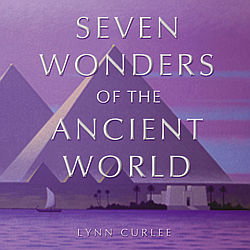 The
Greek category was not "Wonders" but theamata,
which translates closer to "things to be seen".
The seven as we know them could only have been seen after 280 BC,
when the Colossus of Rhodes was completed. Earlier lists included
things like the Walls of Babylon.
The
Greek category was not "Wonders" but theamata,
which translates closer to "things to be seen".
The seven as we know them could only have been seen after 280 BC,
when the Colossus of Rhodes was completed. Earlier lists included
things like the Walls of Babylon.
The list is at its core, a celebration of Greek accomplishments.
Only two of the final seven were non-Greek. Interestingly enough,
since the Colossus of Rhodes fell down after a mere 50 years from a
massive earthquake in 226 BC, few historians could have seen it
standing (Philo amongst them) and so the exact form of the statue
is unknown.
Antipater's first list replaced the Lighthouse of Alexandria with
the Ishtar Gate. Of these wonders, the only one that has survived
to the present day is the
Great Pyramid of Giza. The existence of the Hanging Gardens has
not been proven, though theories abound. Records and archaeology
confirm that the other five wonders used to exist.
The Temple of Artemis and the Statue of Zeus were destroyed by
fire, while the Lighthouse of Alexandria, Colossus, and tomb of
Maussollos were destroyed by earthquakes. There are sculptures from
the tomb of Maussollos and the Temple of Artemis in the British
Museum in London.
Hanging
Gardens of Babylon
The
Hanging Gardens of Babylon, also known as the Hanging
Gardens of Semiramis were built by Nebuchadnezzar II around 600
BCE. He is reported to have constructed
the gardens to please his wife, Amytis of Media, who longed for the
trees and fragrant plants of her homeland Persia. The gardens were
destroyed by several earthquakes after the 2nd century BCE.
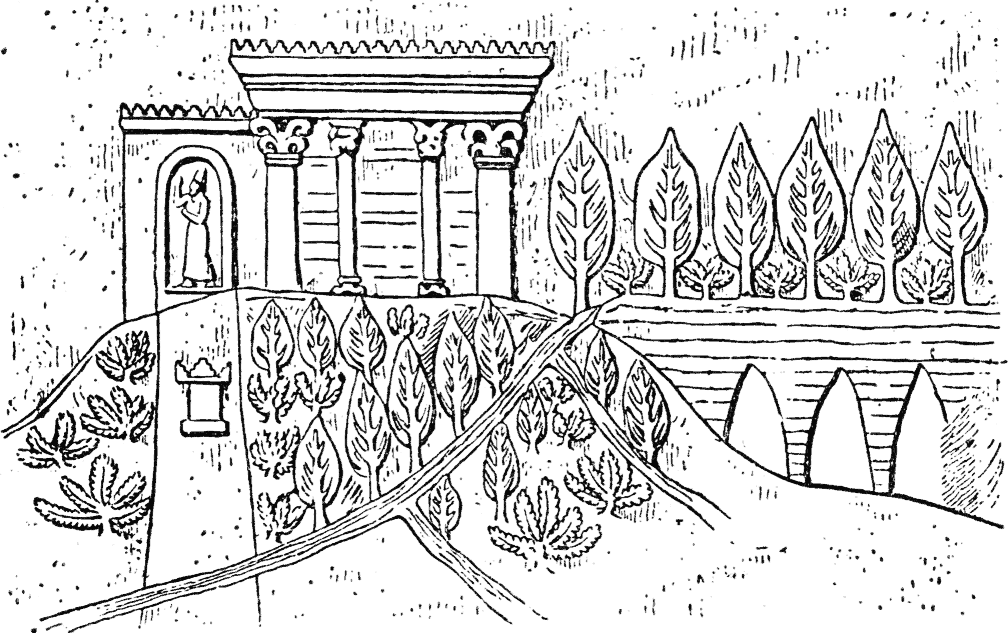
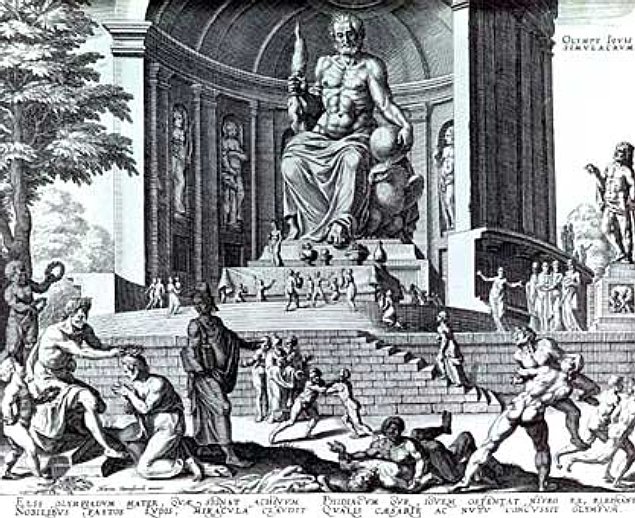
Statue of
Zeus at Olympia
The Statue
of Zeus at Olympia was made by the Greek sculptor of the
Classical period, Phidias, circa 432 BC on the site where it was
erected in the temple of Zeus, Olympia, Greece. Zeus was a
chryselephantine sculpture, made of ivory and gold-plated bronze.
No copy, in marble or bronze, has survived.
Temple of
Artemis'
The Temple
of Artemis', also known less precisely as Temple of Diana,
was a temple dedicated to Artemis completed in its most famous
phase, around 550 BC at Ephesus (in present-day Turkey) under the
Achaemenid dynasty of the Persian Empire. Nothing remains of the
temple. There were older temples built before it on its site, where
evidence of a sanctuary dates as early as the Bronze
Age.
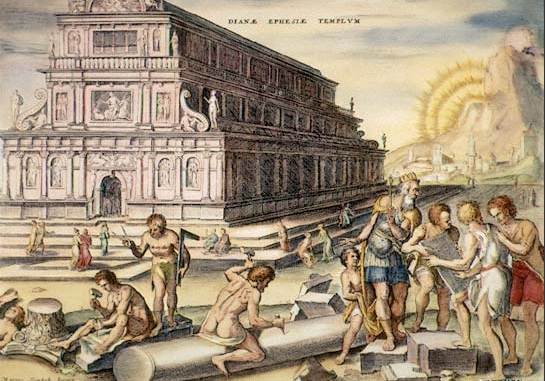
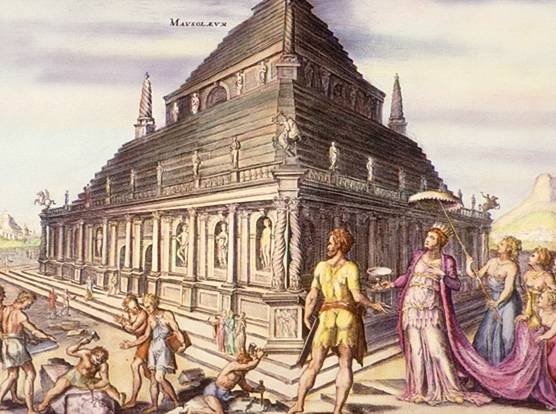
Mausoleum
of Maussollos
The Tomb
of Mausolus, Mausoleum of Mausolus or Mausoleum at
Halicarnassus was a tomb built between 353 and 350 BC at
Halicarnassus (present Bodrum, Turkey) for Mausolus, a satrap in
the Persian Empire, and Artemisia II of Caria, his wife and sister.
The structure was designed by the Greek architects Satyrus and
Pythius. It stood approximately 45 metres in height, and each of
the four sides was adorned with sculptural reliefs created by each
one of four Greek sculptors - Leochares, Bryaxis, Scopas of Paros
and Timotheus.
The
Colossus of Rhodes
The
Colossus of Rhodes was a statue of the Greek god Helios,
erected on the Greek island of Rhodes by Chares of Lindos between
292 and 280 BC. Before its destruction, the Colossus of Rhodes
stood over 30 meters high, making it one of the tallest statues of
the ancient world.

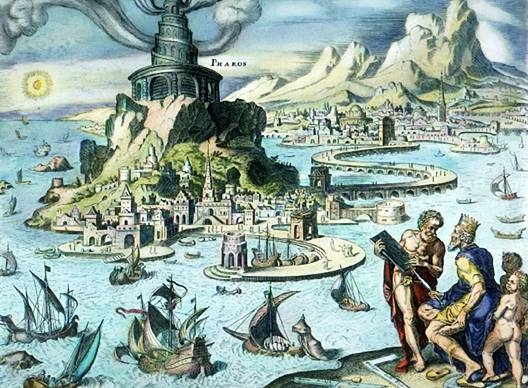
Lighthouse
of Alexandria
The
Lighthouse of Alexandria was a tower built in the 3rd
century BC on the island of Pharos in Alexandria, Egypt to serve as
that port's landmark, and later, its lighthouse. With a height
variously estimated at between 115 and 150 m, it was among the
tallest man-made structures on Earth for many centuries. It may
have been the third tallest building after the two Great Pyramids
for its entire life.
References / Image
Credits:
Wikipedia
1. Knowledge
News
2.
National Library Board
3.
Wikimedia
4.
Wikimedia
5.
Wikimedia
6.
Wikimedia
7.
Wikimedia
8.
Wikimedia